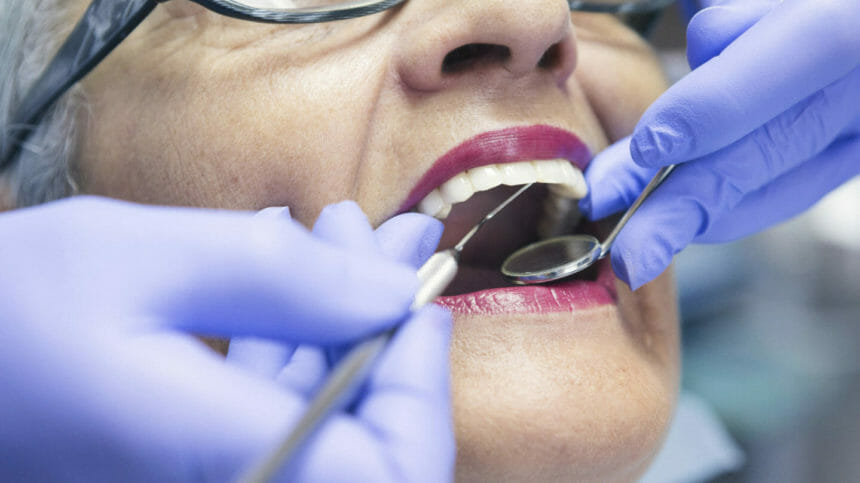
Mobile dentistry for people with dementia, teledentistry, and vaccines by dentist are some of the opportunities that have arisen from disruptions to residents’ oral healthcare during the pandemic, experts say.
The COVID-19 crisis has highlighted weaknesses in oral healthcare in long-term care settings and created potential for positive long-term changes, according to a new report with recommendations from the Gerontological Society of America: “Pandemic-Driven Disruptions in Oral Health: 10 Transformative Trends in Care for Older Adults.”
These opportunities are born of workarounds created by necessity, explained members of the GSA’s Oral Health Workgroup during a series of webinars that preceded the paper.
During the pandemic, daily brushing, flossing and other routine care tasks sometimes were left unattended as long-term care staff members were diverted to provide COVID-19 care, the report noted. Proper oral care also was challenged by staff members’ fears about the potential for oral transmission of COVID-19 as well as staffing shortages in facilities and on oral care teams. In addition, oral care professionals on rotations initially were denied access to long-term care facilities in an effort to stop community-to-facility viral spread. And dental teams were hindered by lack of personal protective equipment early in the pandemic, as well as fear of COVID-19 infection.
One webinar speaker, a general dentist, recounted seeing teeth broken from stress-related grinding and unfinished care for bridges, crowns and implants. The pandemic circumstances also underscored how oral healthcare can sometimes be left on the backburner, the speakers said.
“The COVID-19 disaster presents an opportunity to reimagine the role of nursing homes and healthcare for older adults,” the authors wrote.
Among the 10 possibilities they said have emerged from these challenges:
- Mobile dentistry for people with dementia: Onsite services help clinicians avoid transporting these residents and reduce care by unfamiliar individuals. Innovations in mobile dentistry used during the pandemic can effectively address acute problems and unfinished care, according to Jeffrey E. Dodge, DMD, a general dentist in Woonsocket, RI, who provides mobile dentistry services to long-term care facilities as lead dentist with CareLink.
- Teledentistry and teletriage: One dentist described how his practice was able to use teledentistry and teletriage to provide care before convincing administrators and clinicians of the need to restart in-person care for residents.
- Better management of chronic oral health problems in frail residents: Conservative approaches should be used early to treat caries in frail and functionally dependent older adults, said Leonardo Marchini, DDS, MSD, Ph.D., of the University of Iowa College of Dentistry and Dental Clinics.
- Reworked dental coverage: The industry faces a lack of Medicare coverage for almost all routine dental procedures, the loss of group dental insurance at the time of retirement, and chronic diseases that affect daily care in late life.
- Vaccines by dentists: Recognition of dentists as vaccinators may lead to important new roles for oral healthcare providers and collaborative care.
After a period of relatively relaxed enforcement, penalties and oversight during the pandemic, the long-term care industry may be looking at stronger regulations under the new federal administration, the authors contended.
“This confluence of a crisis, scrutiny, and activism provides the cauldron needed to create increased attention to oral healthcare that can lead to improvements and changes,” they concluded.
The full report is available here.




